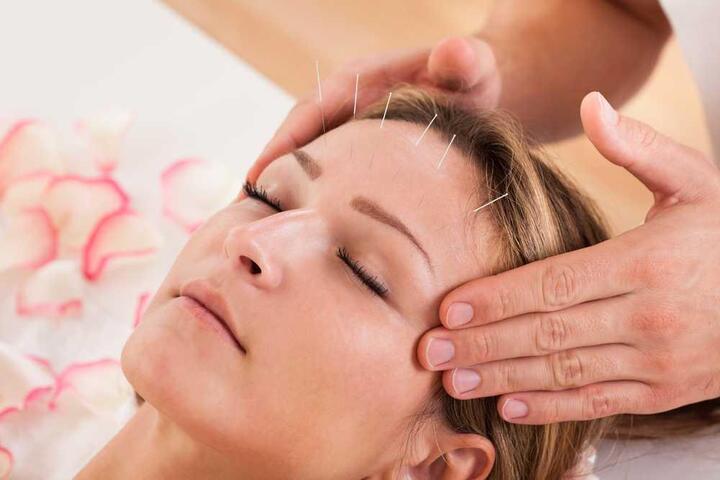Iliotibial band syndrome or ITBS is caused by irritation in the tendon called the iliotibial band by rubbing against hip or knee bones. This tendon is on the outside of the leg and goes from the top of the pelvic bone to the knee. When the condition is too tense this tendon rubs against the bones. Several reasons are there which cause tightening of the Iliotibial band. A lot of those reasons fall under the category of repetitive stress injuries. This implies many endurance sports like cycling and running may result in IT band syndrome.
These types of sports generally have a flexion-extension portion, which can cause friction in the IT band over a period of time. The IT band is a connective fibrous tissue that spans from the point of the hip down to the lateral part of the knee. With repetition and overuse, there could be some friction at the distal part of the IT band, causing inflammation or edema formation. Sometimes it can actually feel kind of like a sharp stingy pain. So basically, the band can rub on these bony areas at the lateral knee, causing extra friction.
Diagnosis of Iliotibial band syndrome
Diagnosis happens by pushing the spots of tenderness.
Your doctor will move your hip away from the body while giving support to your knee. The patient may feel pain in such a condition and won’t be able to move the hip very far.
Knee movement at various angles to see whether it is paining or not.
It can feel more like a stinging or sharp pain at the distal lateral part of the knee. And not always, but sometimes you can also see some edema or swelling in that region. Pain is felt with the knee bending at 30 degrees.
Want to learn more? We think you’ll find these articles very helpful.
How long does it take for an Iliotibial Band to heal?
Patients can surely recover from Iliotibial band syndrome or ITBS. The recovery time depends on person to person. Usually, ITBS is caused because of pelvic imbalance or some biomechanical dysfunction. Although this syndrome is not age-specific, it usually affects endurance athletes or amateur athletes. Taking proper rest and keeping yourself away from high-impact activities is one of the treatments. Your doctor will suggest some therapies and exercises for you to recover faster.
Usually, patients can see relief from pain in a couple of weeks. But for complete resolution, it may take 6 weeks depending on the activity level of the patient.
To get to the root cause of pain and discomfort, schedule an initial consultation, including a comprehensive evaluation and first treatment.
Which exercises are best?
You may require a healthcare specialist to treat this syndrome. We provide various types of treatment for quick recovery of this syndrome.
Stretching and strengthening:
Strengthening the gluteus muscle and stretching the IT band shortly thereafter can offload the IT band. We help patients with such exercises and provide them with videos to do it later on.
Therapy:
The best therapy would be a combination of different therapies. This includes chiropractic, acupuncture, shockwave therapy, and laser therapy. All are beneficial in helping with IT Band syndrome. We provide shockwave therapy to break the friction or scar tissue that forms because of repetitive stress injury. Patients usually feel better after shockwave therapy.
Graston therapy and Active Release Technique:
Active release technique, take off the pressure surrounding the IT band. Although the IT band is not a muscle. But we work on the muscle near the band to treat the pain. Graston therapy involves pinning and stretching certain muscles to break up any scar tissue in which friction is present.
Surgery:
When therapy and exercise don’t work for patients, healthcare specialists may recommend surgery. But it will be the last option.
How do you prevent Iliotibial band syndrome?
- Many healthcare experts will recommend patients to do foam rolling, but not in the IT band area. They can do rolling at the muscles around the structure.
- As ITBS is a pelvic imbalance and biomechanical imbalances, chiropractic treatment can be a prevention measure for this syndrome. Chiropractic can help bring proper balance to the pelvis so that there is no imbalance within the muscles on both sides of the body.
- Do stretching, warm up, and take a rest for some time after exercise.
- Run with shorter strides
- Stretch the IT band, thigh muscles, hip muscles, and hamstrings.
Should we massage the Iliotibial band syndrome?
Massage is strictly not allowed as it can irritate the already inflamed area. Patients are supposed to take rest and follow the specific therapies as per specialist recommendation. Stay away from exercises that cause aggravation like running, cycling, or other high-impact activities. Never walk on hills in such conditions, as it will put extra stress on your joints which can pull the IT band.
Is Iliotibial band syndrome curable?
Yes, it is completely curable and preventable Patients need to do regular therapy followed by exercise, stretching, and strengthening the muscles around the IT band to completely eliminate the Iliotibial band syndrome. You should not get involved in exercise or activities that can aggravate the pain such as running or cycling until you get complete relief from the pain.
How do I check if I have Iliotibial band syndrome?
Patients may feel pain in the lateral part of the knee, i.e. outside of the knee. Sometimes they may get a feeling of bone bruise or bone pain. The best way to check is to touch the knee part and feel any sharp or stinging pain. Also, you can bend your knee by 30°C to check the pain. If you feel the pain, probably you have ITBS. Of course, the official way is to visit the healthcare center. You can take help from a chiropractor, acupuncturist, or physical therapist. He will focus on the pain point so that he can officially give it a good diagnosis.
Causes of Iliotibial band syndrome?
The main cause of this syndrome is friction which lies where the IT band crosses the knee. A fluid-filled sac named ‘bursa’ is present in our body which helps the IT band glide effortlessly over the knee while we bend and stretch our knee. But in the case of a rigid IT band, bending creates too much friction. This causes swelling of both the IT band and bursa which leads to Iliotibial band syndrome or ITBS.
Usually, this syndrome occurs because of excessive physical activity or we can call it Repetitive Stress injuries or RSI. So utilizing the knee over and over again, going through a flexion-extension motion can cause extra stress outside of the knee, causing ITBS.
Wrap Up!
So, are you facing an issue of Iliotibial band syndrome? Or do you feel its symptoms? We at Truspine Clinic in San Francisco offer Chiropractic therapies such as Active Release Technique, Graston Therapy, and Shockwave Therapy to treat Iliotibial band syndrome or ITBS.
To get to the root cause of pain and discomfort, schedule an initial consultation, including a comprehensive evaluation and first treatment.













